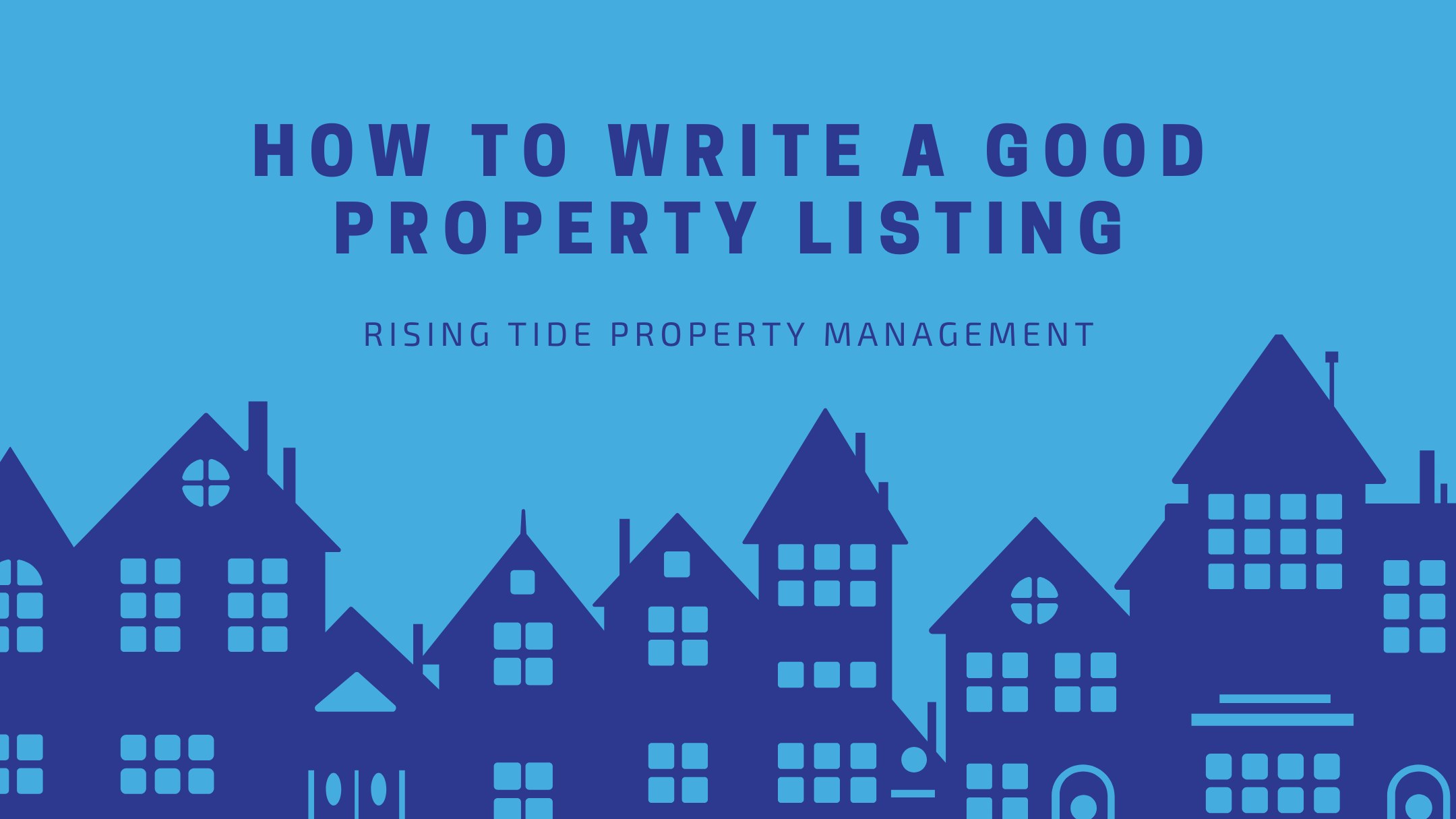How to Write a Good Property Listing
Key Takeaways:
- Start with a Strong Headline: Your headline should immediately grab attention by highlighting the property’s most attractive features.
- Highlight Unique Selling Points: Emphasize what makes the property stand out to prospective tenants, be it a spacious backyard, modern kitchen, or proximity to local attractions.
The rental market is highly competitive. As a landlord, you’re competing with other available units and with renters’ expectations. A well-written property listing can distinguish between an empty unit and a signed lease. It’s not just about listing features, it’s about presenting your property clearly, honestly, and in a way that catches a potential tenant’s attention.
Property managers play a key role in helping landlords attract and retain tenants. One of the most important tools they use is a strong property listing. A good listing brings out the best in your rental, attracts serious applicants, and reduces vacancy time.
At Rising Tide Property Management, we’ve created this article to help landlords navigate this process. We’ll guide you step-by-step on how to create a clear, effective rental listing that stands out for all the right reasons.
Contact Us Today!
1. Gathering Essential Property Details
Before you write anything, be sure you have all the important facts about your property. This helps you create an accurate and complete listing while also saving time. Potential tenants want to know exactly what they’re getting.
Some things to include are:
- Number of bedrooms and bathrooms.
- Square footage.
- Type of property (apartment, single-family home, etc.).
- Appliances included (washer/dryer, fridge, dishwasher).
- Heating and cooling systems.
- Pet policy.
- Parking availability.
- Move-in date and lease terms.
Having these details ready also makes it easier for your property manager to answer questions and screen applicants efficiently.
2. Crafting a Captivating Headline
The headline is the first thing people see. Keep it short, clear, and direct. A good headline should tell people the type of property and one or two key selling points.
Examples:
- “Modern 1-Bedroom with In-Unit Laundry”
- “Pet-Friendly 3-Bedroom Home Near Public Transit”
- “Cozy Apartment with Updated Kitchen and Balcony”
Avoid vague words like “Nice” or “Great.” Instead, focus on features that matter to tenants.
3. Writing an Engaging Opening Statement
The first sentence in your listing should highlight the property’s top features. Think about what makes it special or convenient. This helps renters quickly decide if it’s worth reading more.
Be clear and informative, avoid exaggerating or overpromising, for example: “This spacious two-bedroom unit offers natural light throughout, modern appliances, and a private patio. Perfect for relaxing after a long day.”
Discover Our Services!
4. Detailing the Property
After the opening statement, break down the unit’s layout and features by room. This gives renters a better sense of the property and whether it fits their lifestyle.
Start with the main living area, then include:
- Room sizes (if available).
- Flooring type (hardwood, carpet, tile).
- Kitchen appliances and finishes.
- Bedroom features (closet space, size).
- Bathroom setup (shower/tub combo, updated fixtures).
Also, mention any recent upgrades or renovations. Keep sentences short and factual.
5. Highlighting Unique Features and Amenities
If your property includes extras, make sure to mention them. These could be what sets your listing apart.
Examples of features to include:
- Private outdoor space (balcony, patio, yard).
- Smart home features (thermostats, security systems).
- High-speed internet readiness.
- On-site laundry.
- Fitness center or common areas (if part of a larger complex).
Be sure to explain why these are useful. For example, “The in-unit washer and dryer make laundry more convenient.”
Learn More About Rising Tide
6. Describing the Neighborhood and Surroundings
Tenants aren’t just renting a unit; they’re also choosing a location. A brief description of the surrounding area can help renters imagine what it would be like to live there.
Mention:
- Nearby grocery stores, parks, and restaurants.
- Access to public transportation.
- Safety and community atmosphere.
You don’t need to oversell. Just be honest and helpful. “Located on a quiet street within walking distance of local shops and transit stops” is a solid, useful line.
7. Incorporating Professional and Inclusive Language
Use simple, neutral language. Avoid slang or emotional phrases. Don’t use language that suggests a preference for certain types of tenants.
Do:
- Use words like “spacious,” “updated,” “clean,” or “well-maintained.”
- Stick to facts and features.
Don’t:
- Use phrases like “perfect for single professionals” or “great for families” (this could violate fair housing rules).
Inclusive language ensures your listing is legal and open to all qualified renters.
8. Finalizing the Listing
Before you publish and advertise your listing, take time to proofread. Spelling and grammar mistakes can turn away serious renters. It also makes you look less professional.
Have someone else review the listing if possible. Also, check to make sure everything complies with local and federal fair housing laws. A property manager can help with this to ensure your listing meets all legal standards.
Contact Us Today!
Bottom Line
A well-written property listing can attract responsible tenants, reduce vacancies, and set the tone for a smooth landlord-tenant relationship. By clearly outlining your property’s features, using straightforward language, and focusing on what matters to renters, you can create a strong first impression.
Staying consistent and improving your listings over time is key. Pay attention to what works, ask for feedback, and adjust as needed.
At Rising Tide Property Management, we help landlords create professional and compliant rental listings. Our property managers take care of every detail, from writing listings to showing units and screening tenants.
If you’re ready to fill your vacancy faster and with less stress, contact Rising Tide Property Management today. Let us help you make renting easier and more successful.




